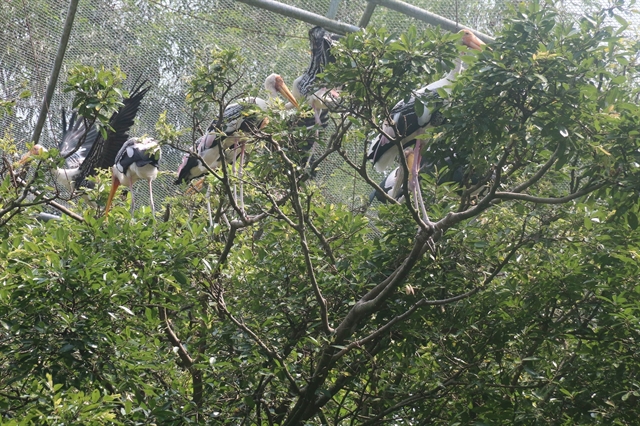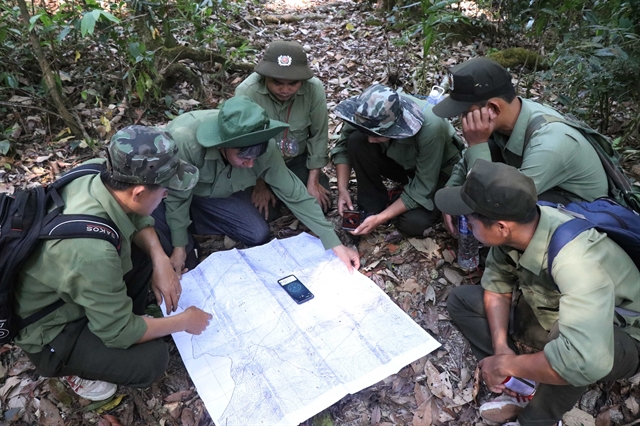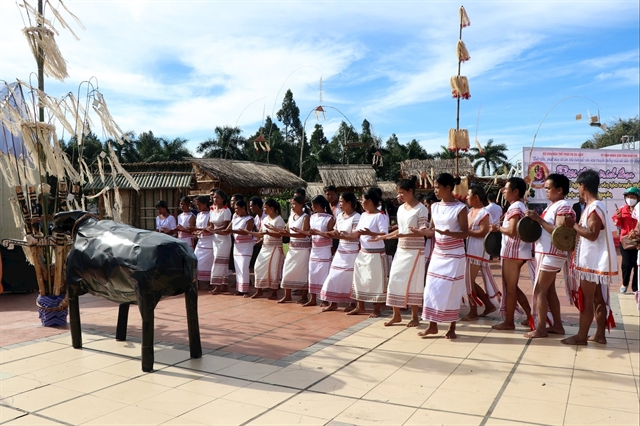 Environment
Environment

More than 27,260 cases of deforestation were reported annually from 2011 to 2015 with some 2,648ha of forest destroyed each year, though the number reduced by 35 per cent between 2016 and 2018.

|
| Many ancient trees are chopped down in a deforestation case in Yok Đôn National Park, Đắk Lắk Province in late December, 2019. — VNA/VNS Photo Tuấn Anh |
HÀ NỘI — Việt Nam will mark four years of natural forest closure this July, a measure to reverse severe deforestation.
A total 58 localities closed their natural forests from July 2016, following Prime Minister Nguyễn Xuân Phúc’s order which aimed to halt wood exploitation by State agencies, including those certified by the Forest Stewardship Council, and offer assistance mechanisms to switch to alternative materials.
The order banned entry to forests without permission and banned logging altogether.
More than 27,260 cases of deforestation were reported annually from 2011 to 2015 with some 2,640ha of forest destroyed each year. The number reduced by 35 per cent between 2016 and 2018 as the policy was adopted. Legal proceedings were launched in 363 cases in the same period.
Some 628,000ha of forest were planted, including 44,000ha of protection forest and 577,000ha of production forest. The country’s forest coverage rose to nearly 42 per cent by the end of 2018, according to Ministry of Agriculture and Rural Development (MARD).
The Central Highlands, for the first time in 45 years, witnessed an increase of forest area, standing at 2.5 million hectares in 2018.
As much as VNĐ332 billion (US$14.2 million) was allocated in 2017 from the State budget to support localities and cover profit losses of forest owners due to the closure order as well as the expenses of management and protection.
The MARD is developing forest carbon sequestration payments, focusing on highly polluted industries, a measure set to be filed to the Government by the end of 2020.
Payments for ecosystem services have been accelerated in the central provinces of Nghệ An, Quảng Nam and Hà Tĩnh.
The Việt Nam Forest Protection and Development Fund also works with the Việt Nam Forest and Delta Program and Green Trường Sơn Program supported by USAID to implement payments in other localities including Thanh Hóa, Quảng Ninh and Thừa Thiên-Huế.
More than VNĐ2.9 trillion ($124.1 million) of service fees were collected in 2018, 71 per cent more than the previous year as 43 per cent of the country’s total forestry area enjoyed the payment in 2019.

|
| The inspection team of Krông Bông Forestry Company checks a forest map while patrolling the sub-area 1219 in Krông Bông District, home of ancient fokienia trees. — VNA/VNS Photo Tuấn Anh |
Continued destruction
Despite incentives and measures taken to protect forests, deforestation, especially in the Central Highlands, continues.
Fokienia – an indigenous type of plant found at an altitude of 1,500m in Đắk Lắk Province – is among the most endangered.
Offering high economic values, fokienia forests have become ideal prey for illegal loggers, despite harsh terrain.
Sub-area 1219 in Krông Bông District, home of ancient fokienia trees, has suffered tree massacres for years. In the latest case, 19 fokienia trees were found chopped into pieces, pulled down to a nearby valley to be brought out of the forest this April. All of the trees belonged to the protection forest.
Although the destruction is clear as day, loggers seem to disappear into thin air and most cases are closed without culprits being punished.
Chu Minh Quang, deputy head of Krông Bông Forestry Company’s Segment 2 – who is in charge of the sub-area 1219, said to approach the area, it usually takes guarding forces two days of walking. Therefore, despite regular inspections, it is impossible to stop loggers from chopping down precious fokienia trees.
Only 13 people, divided into teams of three to four, manage more than 12,000ha of the forest, Quang said. Each shift lasts two to three days and the loggers take advantage of shift changes to fell trees.
Bùi Quốc Tuấn, the company’s director, said under the impacts of climate change, local residents have lost livelihoods and become dependent on the forest’s natural resources. Many have established gangs of loggers, joining hands to demolish the natural habitat.
“Until now, none of loggers have been arrested. The helplessness sets a huge challenge to stop the crime,” said Tuấn.
Lê Văn Long, head of Krông Bông District People’s Committee, said to encourage people in Yang Mao, Cư Đrăm and Cư Pui communes outside of the forest not to trespass and exploit wood, local authorities have implemented assistance programmes to help them start businesses and earn sustainable livelihoods.
The district People’s Committee has investigated local civil servants and residents who gave loggers tip-offs to escape from law enforcement.
Đắk Lắk Province Department of Agriculture and Rural Development asked forest managers to strictly handle organisations and individuals involved in illegal logging, especially Krông Bông Forestry Company which was unable to protect 19 fokienia trees from being felled.
The lack of sanctions to monitor migration flows and stop forestry land from being illegally traded creates loopholes for deforestation. Meanwhile, benefit-sharing mechanisms are not attractive enough to call for private sector participation in protecting and planting forests, according to the MARD.
From 2021 to 2030, Việt Nam hopes to sustainably manage forests, increase forestry coverage and ensure people’s livelihoods in the face of environmental damage caused by climate change, according to a plan signed by Deputy PM Trịnh Đình Dũng in mid-April.
The plan focuses on accelerating civic engagement in forest protection and development which hands over forestry areas to local residents, especially ethnic minority groups, to manage and plant trees. The General Department of Land Administration will work as a monitoring body to instruct and inspect localities, organisations and businesses to tighten management over forests. — VNS




.jpg)